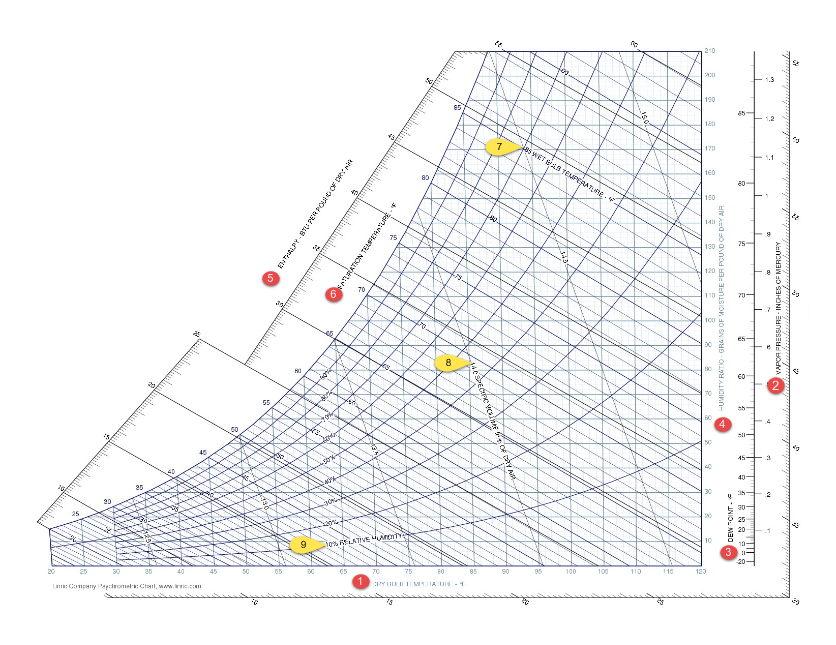

The mixed air condition can be determined by drawing a line between the return and outside air points, with the mixed air condition being based off the proportion of return air versus outside air.

The outside air condition can be taken from ASHRAE climatic data, which, in this summer for Washington, D.C., is 92° DB and 74.7° WB. Supply air must fall on this line in order to properly condition the space due to the specific sensible and latent load present.Īs seen in Figure 2, the museum gallery is required to operate at 70° dry bulb and 45% RH. The sensible heat ratio is used in tandem with the psychrometric chart by plotting the ratio, or slope, on the chart running through the space temperature and RH set points.

From this, the sensible heat ratio, which is the sensible heat load divided by the total heat load, can be determined to be 0.79.

With strict operating conditions, humidifying and dehumidifying strategies will need to be set in place in order to condition the air to a precise location on the psychrometric chart.įor example, take an interior 10,000-square-foot interactive museum gallery located in Washington, D.C., that has 20% outside air, a lighting power density of 1 W/ft 2, a plug load of 5 W/ft 2, and an occupancy of 400 people. Moving the plotted point in different directions on the chart represents various ways of conditioning the air, as seen in Figure 2. A psychrometric analysis involves using a psychrometric chart, as seen in Figure 1, to determine the dry bulb (☏), wet bulb (☏), dew point (☏), RH (%), humidity ratio (gr/lb), and enthalpy (btu/lb) of air at a given condition. Museums, hospitals, and lab buildings all generally need stricter temperature and humidity set points, making psychrometric analysis an important step in the design of the HVAC systems that serve these types of buildings. For instance, a typical office building will require a space temperature of 75☏ ± 2☏ and a humidity level of 50% ± 5% however, a typical museum gallery may require a space temperature of 70☏ ± 2° and a relative humidity (RH) of 45% ± 5%. Buildings require various levels of temperature and humidity controls, but when it comes to preserving historical artifacts or performing an operation, the temperature and humidity levels in a space become crucial to keep a building operational.


 0 kommentar(er)
0 kommentar(er)
